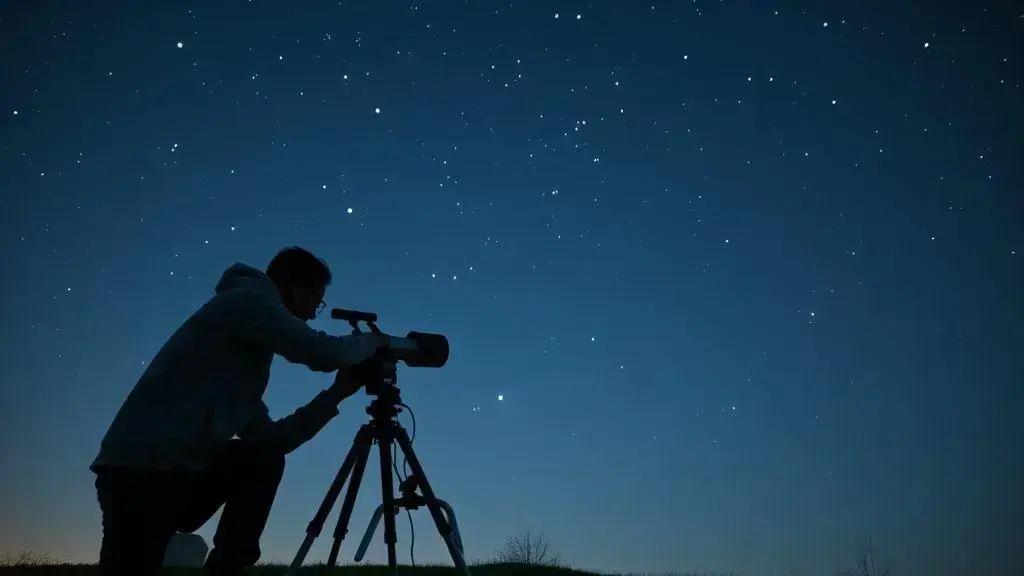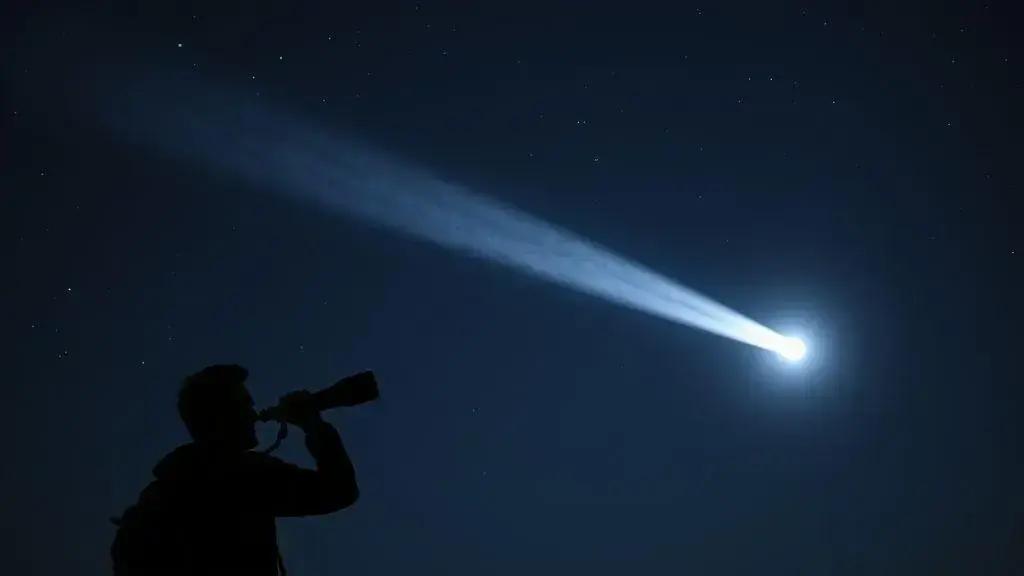Comet sightings and astronomical forecasts you can’t miss

Comet sightings depend on factors like their proximity to the Sun, brightness, atmospheric conditions, and location, which influence their visibility from Earth for stargazers.
Comet sightings and astronomical forecasts capture the imagination of many. Have you ever wondered what it feels like to witness a comet soaring across the night sky? Let’s dive into what’s on the horizon for astronomy lovers.
What are the upcoming comet sightings?
Comet sightings are exciting events for stargazers around the world. Knowing what to expect in the coming months can enhance your experience. Let’s look at some of the most anticipated upcoming comet sightings.
Key Upcoming Comet Sightings
Several comets are set to make their appearances soon. These celestial wonders vary in visibility and brightness, providing unique opportunities for observations. Here are a few comets to keep an eye on:
- Comet NEOWISE: Expected to be visible in the northern hemisphere.
- Comet ZTF: Predicted to shine brightly in early next year.
- Comet Leonard: A potential bright sight in late winter to spring.
Each comet has its unique trajectory and timing. As the dates draw nearer, keep an eye out for updates on visibility conditions. Observing comets can be a fulfilling experience, where the thrill of spotting a celestial object adds to the joy of stargazing.
The best time for viewing comets is usually during the pre-dawn or post-sunset hours. Make sure to check your local weather as clear skies are crucial for great visibility. Remember to use a star map or a good astronomy app to locate these comets with ease.
Preparation Tips for Observing Comets
Preparation will enhance your comet viewing experience. Here are essential tips:
- Find a dark location away from city lights.
- Bring binoculars or a telescope for a better view.
- Check the moon phase; less moonlight means a better sighting.
As you await these celestial displays, learning more about their history and significance can also enrich your experience. Each comet tells a unique story, and understanding these can deepen your appreciation for these astronomical phenomena.
How to prepare for astronomical forecasts

Preparing for astronomical forecasts can significantly enhance your stargazing experience. Understanding what conditions are ideal can lead to more rewarding observations. Here are some steps to ensure you’re ready for the upcoming celestial events.
Check the Weather Conditions
Weather plays a crucial role in astronomy. Cloudy skies can obstruct your view of comets and other celestial bodies. Here are ways to monitor weather conditions:
- Use reliable weather apps and websites.
- Look for Clear Sky Charts for specifics on visibility.
- Pay attention to the moon’s phase to avoid bright light interference.
Additionally, local forecasts may not always cover all variables, so checking multiple sources can help you find the best viewing nights.
Gather Your Equipment
Your equipment can make a big difference in your observations. Whether you’re using binoculars, a telescope, or simply your eyes, having the right tools is essential. Consider the following:
- Invest in a good pair of binoculars for enhanced visibility.
- If using a telescope, familiarize yourself with its setup and mechanics.
- Prepare an app or star chart to help identify celestial objects.
Preparation doesn’t stop at equipment, though. Finding the right location is also vital for optimal observation.
Choosing the Right Location
Finding a dark spot away from city lights is key. The less light pollution you encounter, the better your experience will be. Look for open fields, mountains, or parks where visibility is high. It’s also wise to visit your chosen spot in advance to scout the area.
Lastly, make a list of what you’ll see. Being informed about comet names, dates, and visibility levels can make your experience much more exciting. Knowing the details about the comets or astronomical events can turn a simple viewing into an educational adventure for you and your friends.
The best tools for observing comets
When it comes to observing comets, having the right tools can greatly enhance your experience. Different equipment can offer various levels of detail and views. Below, we’ll explore some of the best tools for observing comets.
Binoculars
Binoculars are an excellent starting point for novice astronomers. They are portable, user-friendly, and can provide a good field of view. Here are some reasons why binoculars are great for comet viewing:
- Lightweight and easy to carry.
- Provide a wider view of the sky.
- Great for identifying comets before using a telescope.
When selecting binoculars, look for those with a larger aperture for better light gathering.
Telescope
For a closer look at comets, a telescope is essential. A good telescope can reveal the stunning details of a comet’s coma and tail. Consider these points:
- Aperture size matters—larger apertures collect more light.
- Finderscopes help locate comets more efficiently.
- Stable mounts are vital for steady viewing.
Before buying, familiarize yourself with different types of telescopes. Each type offers unique advantages.
Smartphone Apps
Modern technology adds a new dimension to comet observation. Smartphone apps can assist in locating comets and tracking their paths. Some features to look for include:
- Real-time sky maps showing current locations of comets.
- Notifications for upcoming celestial events.
- Augmented reality features to help identify stars and constellations.
These apps can make a significant difference in your viewing experience by providing essential guidance.
Star Charts and Guides
Using star charts and books can also enhance your understanding of the night sky. Familiarizing yourself with a good star chart can help you locate comets more easily. Look for charts that include:
- Current and upcoming celestial events.
- Detailed information about comets and their paths.
- Visual aids that explain how to identify comets.
Preparation and knowledge are key elements for enjoying comet observation. Whether you’re using binoculars, telescopes, or apps, the right tools can lead to a remarkable experience as you gaze at these spectacular celestial visitors.
Understanding comet behavior and visibility

Understanding comet behavior and visibility is essential for anyone interested in observing these celestial objects. Comets are dynamic travelers in our solar system, and their appearance can change dramatically as they approach the Sun.
What Affects Comet Visibility?
Several factors influence how visible a comet will be from Earth. These include the comet’s distance from the Sun, its brightness, and atmospheric conditions on our planet. During their journey, comets can experience outgassing, where ice and gas are released, creating a glowing halo and a tail that can stretch for millions of kilometers. The activity level of a comet can vary greatly.
- Proximity to the Sun: As a comet nears the Sun, it warms up, causing increased outgassing.
- Orbital Path: The orbit of a comet determines when and where it can be viewed from Earth.
- Brightness and Size: Some comets are inherently brighter and larger than others, making them easier to spot.
It’s crucial to track the positions of these comets as they travel. Many online resources provide updates on their visibility, helping viewers plan their observations well.
Best Times for Viewing Comets
The best times to observe comets are typically during the early morning or late evening when the sky is darker. Comets may be best viewed when they are high above the horizon, which is usually several hours after sunset or before sunrise. This visibility can also fluctuate based on the time of year and your geographic location.
As comets approach the Sun, they can become significantly brighter over days or weeks, sometimes turning into spectacular sights in the night sky. Keeping abreast of astronomical forecasts can ensure that you don’t miss these extraordinary events.
In summary, understanding the behaviors and conditions that affect comet visibility can greatly enhance your stargazing experience. With the right knowledge, you can maximize your chances of spotting these fascinating cosmic phenomena when they appear.
In conclusion, observing comets is a thrilling experience that combines wonder and science. By understanding comet behavior and visibility, you can be better prepared to witness these magnificent celestial events. With the right tools, knowledge, and a bit of luck, you can enjoy the beauty of the night sky and discover the amazing stories that comets bring. Stay informed, gather your gear, and get ready for a fantastic stargazing adventure!
FAQ – Frequently Asked Questions about Comet Sightings
What is a comet?
A comet is a small solar system body made of ice, dust, and rocky material that can produce a visible atmosphere or tail when close to the Sun.
How can I best observe a comet?
To best observe a comet, use binoculars or a telescope on clear nights, and find a dark location away from city lights.
What factors affect comet visibility?
Comet visibility can be affected by its distance from the Sun, brightness, atmospheric conditions, and light pollution in your area.
How can I stay updated on upcoming comet sightings?
You can stay updated by following astronomy websites, using apps, or checking local astronomical societies for events and forecasts.





